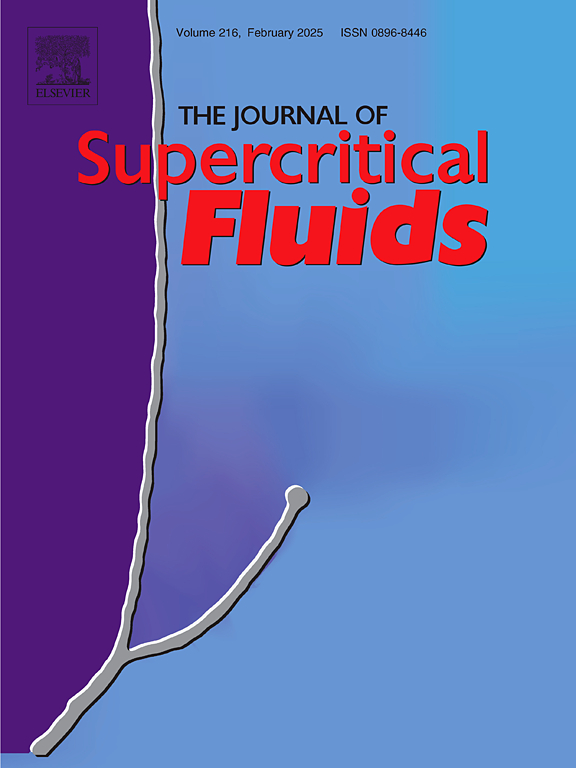Synergistic corrosion mechanisms of supercritical water and Na2SO4 deposition layer: Austenitic stainless steels 316 L and 304
IF 4.4
3区 工程技术
Q2 CHEMISTRY, PHYSICAL
引用次数: 0
Abstract
This study investigated the corrosion behavior of 316 L (316LSS) and 304 (304SS) stainless steels under a Na2SO4 deposition layer in supercritical water (SCW). The salt layer reduced oxide film densification versus pure SCW, with 304SS exhibiting more severe corrosion (e.g., pitting) due to the absence of Mo which resists pitting corrosion. Without the salt layer, oxide film thicknesses were 6.50 µm (316LSS) and 1.60 µm (304SS); in contrast, 6.52 µm and 9.33 µm, respectively, indicating thicker in SCW with the salt layer. At 723 K and 25 MPa, higher water density increased Ni/Fe ion solubilities, while the salt layer trapped these ions in the microenvironment between the layer and oxide film, generating a locally acidic and oxidizing environment via hydrolysis of Ni/Fe ions. This process accelerated metal ion leaching and oxide dissolution, further enhanced in the presence of SO42-. Na2SO4 deposition layer and SCW synergistically intensified corrosion in both alloys.
超临界水和Na2SO4沉积层的协同腐蚀机理:奥氏体不锈钢316 L和304
研究了超临界水(SCW)中Na2SO4沉积层对316 L (316LSS)和304 (304SS)不锈钢的腐蚀行为。与纯SCW相比,盐层降低了氧化膜的致密化,由于缺乏抗点蚀的Mo, 304SS表现出更严重的腐蚀(例如点蚀)。无盐层时,氧化膜厚度分别为6.50 µm (316LSS)和1.60 µm (304SS);相比之下,6.52 µm和9.33 µm,表明含盐层的海水更厚。在723 K和25 MPa下,较高的水密度增加了Ni/Fe离子的溶解度,而盐层将这些离子捕获在盐层和氧化膜之间的微环境中,通过Ni/Fe离子的水解产生局部酸性氧化环境。这一过程加速了金属离子的浸出和氧化物的溶解,在SO42-存在下进一步加速。Na2SO4沉积层和SCW协同增强了两种合金的腐蚀。
本文章由计算机程序翻译,如有差异,请以英文原文为准。
求助全文
约1分钟内获得全文
求助全文
来源期刊

Journal of Supercritical Fluids
工程技术-工程:化工
CiteScore
7.60
自引率
10.30%
发文量
236
审稿时长
56 days
期刊介绍:
The Journal of Supercritical Fluids is an international journal devoted to the fundamental and applied aspects of supercritical fluids and processes. Its aim is to provide a focused platform for academic and industrial researchers to report their findings and to have ready access to the advances in this rapidly growing field. Its coverage is multidisciplinary and includes both basic and applied topics.
Thermodynamics and phase equilibria, reaction kinetics and rate processes, thermal and transport properties, and all topics related to processing such as separations (extraction, fractionation, purification, chromatography) nucleation and impregnation are within the scope. Accounts of specific engineering applications such as those encountered in food, fuel, natural products, minerals, pharmaceuticals and polymer industries are included. Topics related to high pressure equipment design, analytical techniques, sensors, and process control methodologies are also within the scope of the journal.
 求助内容:
求助内容: 应助结果提醒方式:
应助结果提醒方式:


